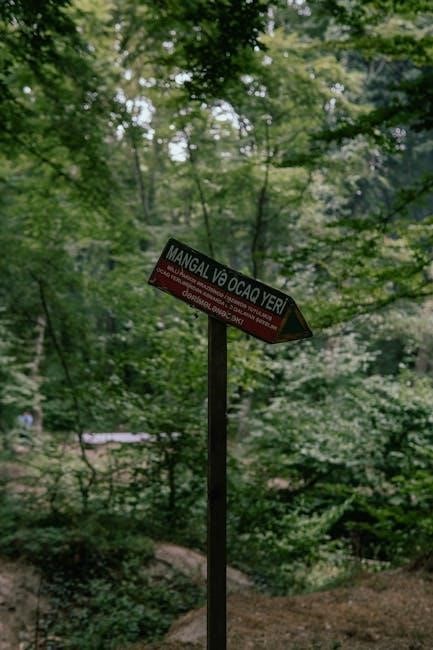Welcome to the ultimate guide for national park adventures! Discover how to plan, explore, and make the most of your journey through stunning natural landscapes.
1.1. The Importance of Planning
Planning is essential for a successful national park adventure. It helps you avoid overcrowded trails, ensure safety, and make the most of your time. Researching park rules, trail conditions, and wildlife activity beforehand can prevent unexpected challenges. A well-thought-out plan also allows you to pack appropriately, book accommodations in advance, and prepare for varying weather conditions; Whether it’s a day visit or a multi-day trip, proper planning enhances your experience and ensures a memorable journey through nature’s wonders.
1.2. Key Considerations for a Successful Trip
Planning a national park adventure requires careful thought about your itinerary, accommodations, and safety. Research the park’s rules, trail difficulty, and weather forecasts. Pack essentials like water, snacks, and navigation tools. Consider your physical fitness level and choose hikes accordingly. Respect wildlife by maintaining distance and following guidelines. Stay informed about park closures or restrictions. Bring a first-aid kit and emergency supplies. Lastly, embrace flexibility and enjoy the journey while preserving nature for future visitors. A well-prepared trip ensures unforgettable experiences and safety in the great outdoors.
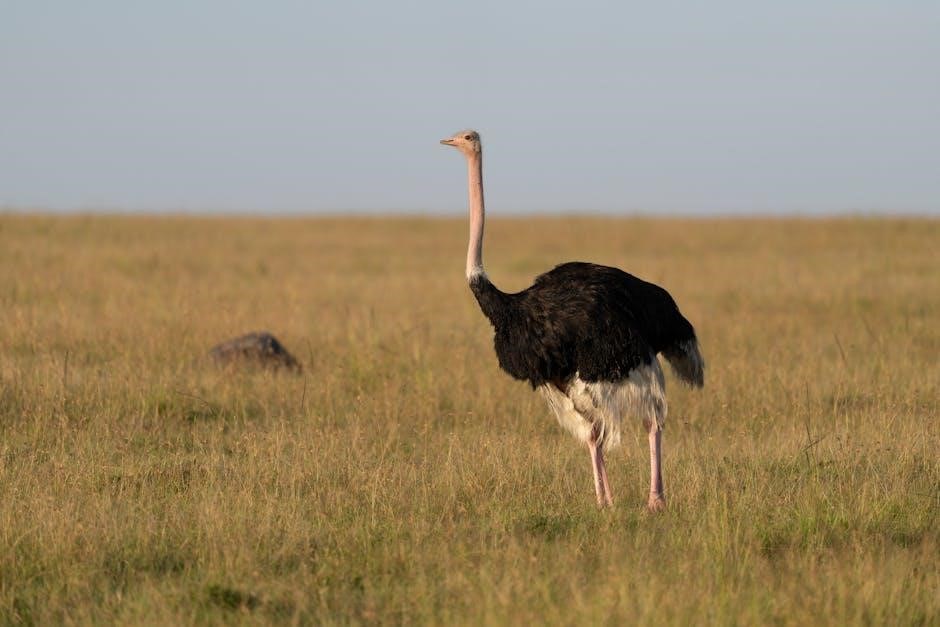
Choosing the Right National Park
Selecting the perfect national park begins with understanding your interests. From scenic landscapes to wildlife, each park offers unique experiences tailored to your adventure preferences.
2.1. Factors to Consider When Selecting a Park
When choosing a national park, consider location, accessibility, and activities offered. Assess your interests, such as hiking, wildlife, or scenic drives. Check seasonal conditions, as weather can impact trails and wildlife visibility. Budget and accommodation availability are also key factors. Additionally, think about park size and crowd levels, as some parks are more remote or less crowded. Lastly, consider your physical abilities and the difficulty of trails to ensure a suitable match for your adventure goals.
2.2. Popular National Parks for Different Interests
Discover parks tailored to your passions! For wildlife enthusiasts, Kruger National Park in South Africa offers unparalleled safari experiences. Nature lovers can explore the scenic trails of Yosemite or Zion. Photography buffs will find breathtaking vistas in Yellowstone or Bryce Canyon. Adventure seekers might prefer the rugged landscapes of the Grand Canyon or Mount Rainier. Each park caters to unique interests, ensuring unforgettable experiences for every kind of traveler. Plan your visit to match your preferences for an ideal national park adventure.
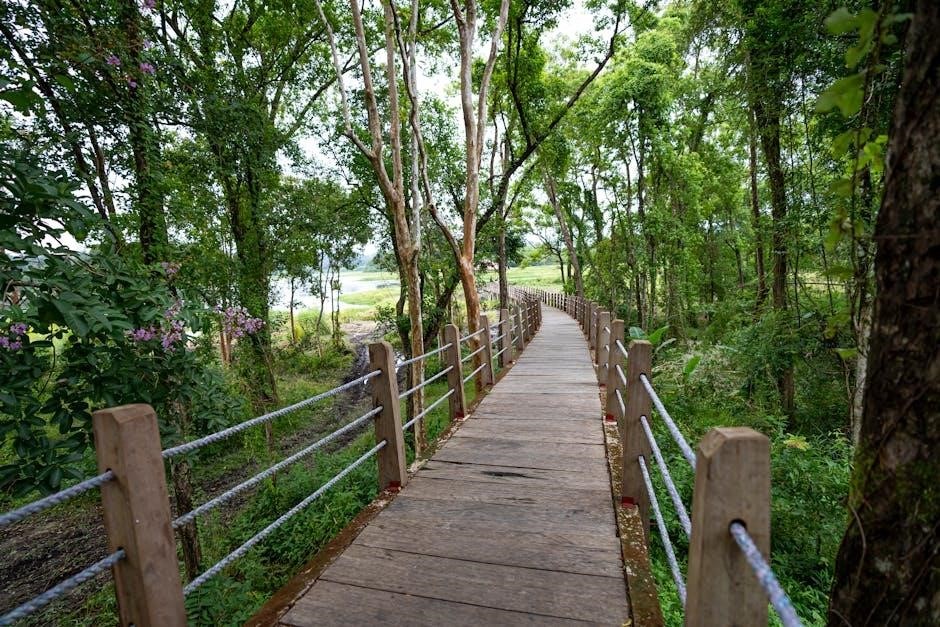
Planning Your Itinerary
Creating a balanced itinerary is key to maximizing your national park experience. Allocate time for hikes, wildlife spotting, and relaxation, ensuring flexibility for spontaneous adventures and downtime.
3.1. How to Draft a Realistic Itinerary
Start by identifying key attractions and activities, balancing must-see spots with flexibility. Consider the park’s size and travel time between locations. Include seasonal highlights like wildlife migrations or blooming flowers. Check park hours, trail conditions, and weather forecasts. Allocate time for meals, rest, and unexpected discoveries. Prioritize early mornings and late afternoons for optimal wildlife viewing. Build in buffers for delays and spontaneity. Finally, ensure your plan aligns with your fitness level and interests for a stress-free adventure;
3.2. Seasonal Considerations and Best Times to Visit
Timing your national park visit is crucial for an optimal experience. Seasons greatly impact weather, wildlife activity, and accessibility. Spring often brings vibrant wildflowers, while autumn offers stunning foliage. Summer attracts crowds but provides longer hiking days, whereas winter may limit some trails but offers serene landscapes. Research each park’s peak season for wildlife spotting or scenic beauty. Plan around weather extremes, such as monsoons or snowstorms. Consider visiting during shoulder seasons for fewer crowds and lower costs. Always check park-specific guidelines to ensure a safe and enjoyable trip.
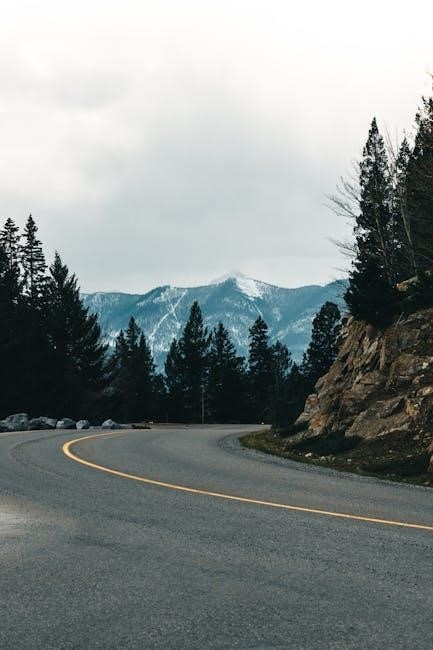
Accommodation Options
From camping under the stars to cozy lodges, national parks offer diverse lodging choices. Explore options like cabins, tents, or budget-friendly stays to suit your adventure style.
4.1. Camping Inside the National Park
Camping inside the park offers an immersive experience, connecting you with nature and wildlife. Book campsites in advance, especially during peak seasons. Bring essentials like sturdy tents, sleeping bags, and cooking gear. Follow park rules to preserve the environment and respect wildlife. Many camps offer basic amenities, but pack extra supplies for emergencies. Camping provides unique opportunities for stargazing and early morning hikes, enhancing your adventure. Always check park guidelines for campfires and food storage to ensure a safe and memorable stay.
4.2. Lodges and Other Staying Options
For a comfortable stay, consider lodges within or near the national park. These offer luxurious amenities, scenic views, and easy access to trails. Some parks also provide budget-friendly options like guesthouses or eco-lodges. Private game reserves often include exclusive accommodations with guided tours. For a unique experience, opt for treehouses or glamping sites. Always book in advance, especially during peak seasons. Many lodges offer meal plans and activities, ensuring a hassle-free adventure. Whether you prefer luxury or simplicity, there’s a stay option to match your national park experience and budget.
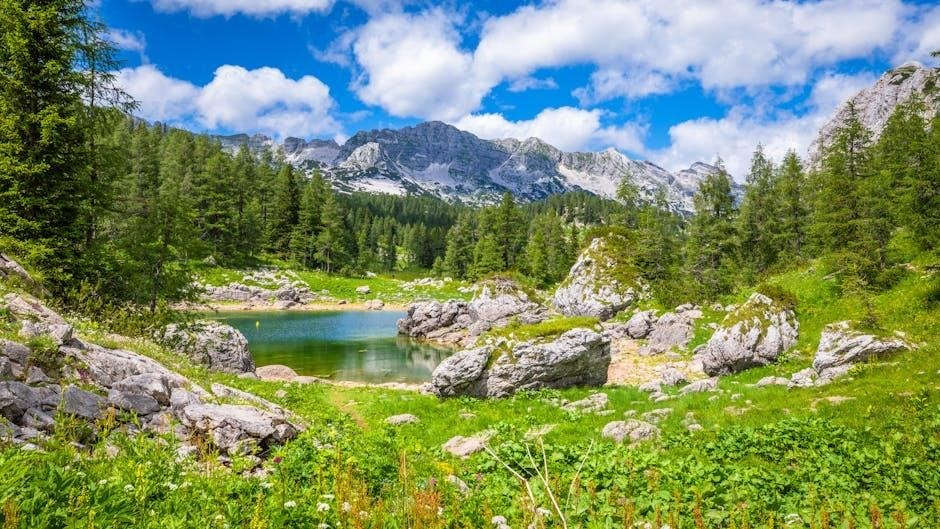
Planning Your Hikes
Planning your hikes involves assessing trail difficulty, researching routes, and packing essentials. Consider weather, start early, and stay on designated paths to respect nature and ensure safety.
5.1. Assessing Hike Difficulty and Suitability
Assessing hike difficulty involves evaluating trail length, elevation gain, and terrain. Consider your fitness level, experience, and group dynamics to ensure a safe and enjoyable experience. Key factors include distance, estimated time, and trail conditions. Use park resources like maps and ranger advice to gauge suitability. Matching the hike to your abilities ensures a rewarding adventure without unnecessary risks. Always check weather conditions and trail maintenance status before heading out. Proper planning helps avoid setbacks and enhances the overall experience for all participants.
5.2. Essential Items to Pack for Hikes
Pack navigation tools like maps and a GPS device, sturdy hiking boots, and layered clothing for varying weather. Bring a water filter or purification tablets, a first aid kit, and a headlamp for visibility. Include energy-rich snacks, a portable stove, and a multi-tool for emergencies. Don’t forget sunscreen, insect repellent, and a lightweight emergency shelter. Ensure your backpack is comfortable and well-organized to carry all essentials without hindering your movement. Always check the weather forecast and adjust your gear accordingly for a safe and enjoyable hiking experience in the national park.
Safety and Preparation
Ensure a safe adventure by carrying a first-aid kit, staying alert for wildlife, and being prepared for emergencies with maps, water, and extra supplies.
6.1. Wildlife Safety Tips
When exploring national parks, prioritize wildlife safety. Maintain a safe distance from animals, using binoculars for closer views. Keep campsites clean to avoid attracting wildlife. Stay in groups during hikes and make noise to avoid surprising animals. Follow park guidelines and guided tour instructions. Carry bear spray and know how to use it. Be aware of your surroundings, especially near water or trails. Respect wildlife habitats and never feed or approach animals. Stay informed about park-specific safety protocols to ensure a safe and enjoyable adventure.
6.2. Weather and Emergency Preparedness
Always check weather forecasts before your trip and pack layers for varying conditions. Bring rain gear and sturdy footwear for unpredictable terrain. Carry a first-aid kit, map, and emergency shelter. Stay informed about park alerts and know the location of nearest ranger stations. For winter visits, include warm clothing and traction devices. Keep a charged phone or portable charger handy. Familiarize yourself with emergency protocols, such as wildlife encounters or sudden storms. Being prepared ensures a safer and more enjoyable adventure.
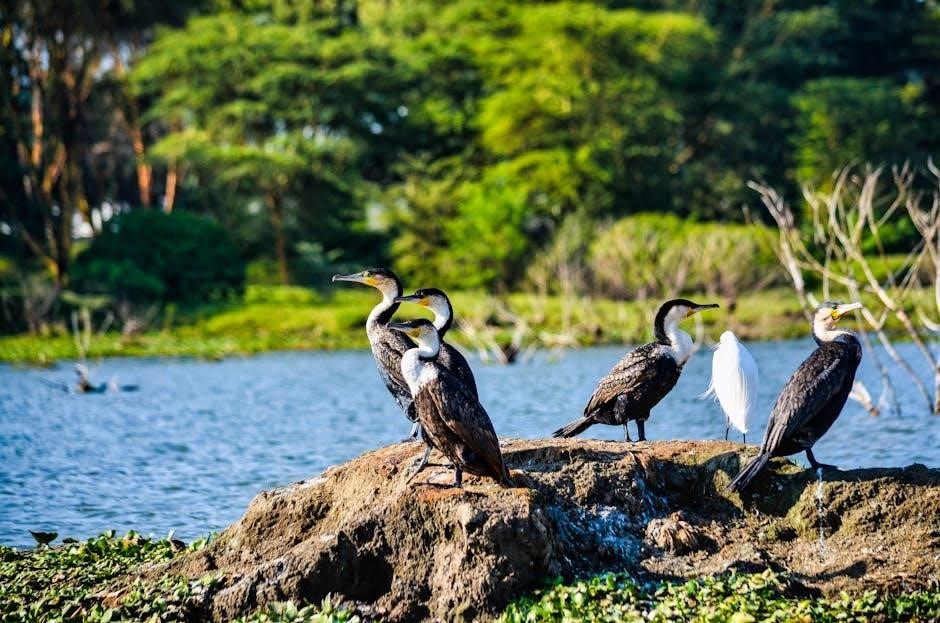
Wildlife Watching and Photography
Master the art of spotting wildlife and capturing stunning photos. Learn about patience, understanding animal behavior, and using the right gear for unforgettable moments in nature.
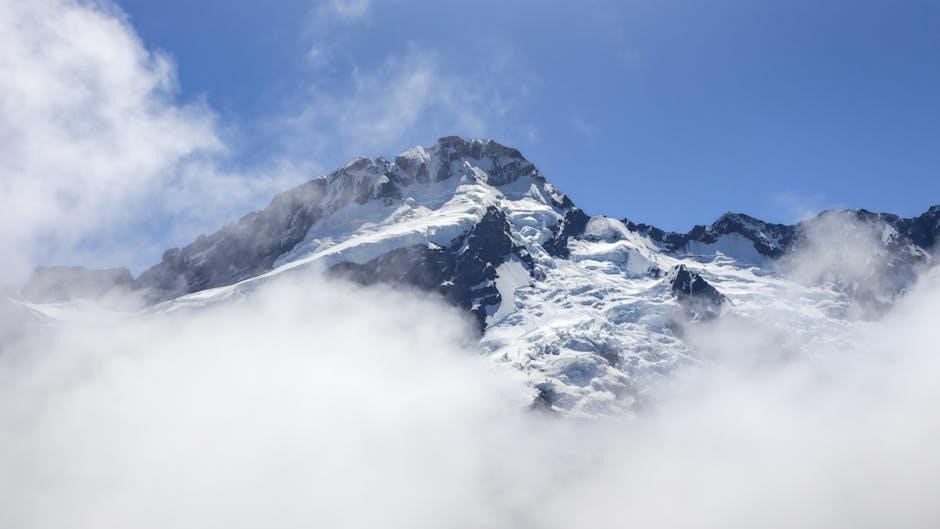
7.1. Best Practices for Wildlife Spotting
For a rewarding wildlife spotting experience, consider visiting during early mornings or late afternoons when animals are most active. Stay quiet and patient, as noise can scare animals away. Use binoculars for a closer look without disturbing them. Keep a safe distance to respect wildlife boundaries. Guided tours with experienced rangers can enhance your chances of spotting diverse species. Remember to stay in designated areas and follow park rules to ensure both your safety and the well-being of the animals.
7.2. Photography Tips for Capturing Wildlife
Mastering wildlife photography in national parks requires patience and skill. Use a telephoto lens for distance shots, and shoot during golden hours for optimal light. Anticipate animal behavior to capture dynamic moments. Keep a low profile and move quietly to avoid startling subjects. Experiment with different angles and compositions to add creativity. Respect wildlife boundaries and maintain ethical practices. Practice consistently to improve your technique and make unforgettable memories of your national park adventures.
- Stay patient and observant for the perfect shot.
- Use appropriate gear for clear, detailed images.
- Understand animal patterns to anticipate movements.
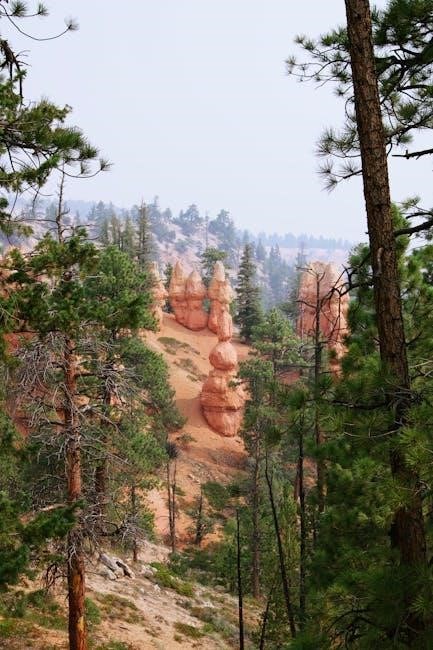
Safari Adventures
Embark on thrilling safari adventures, exploring diverse wildlife and breathtaking landscapes. Plan meticulously, considering park choices, guided tours, and seasonal wildlife activity for an unforgettable experience.
8.1. Planning a Safari in South Africa
Planning a safari in South Africa is an exciting endeavor! Start by choosing between Kruger National Park and private reserves, each offering unique experiences. Opt for a guided tour or self-drive adventure, ensuring you pack essentials like binoculars and sturdy footwear. Consider a 9-day itinerary to explore diverse wildlife and landscapes. Research seasonal best times to visit, as game viewing varies. Don’t miss scenic sunset drives and Bushman painting tours for a cultural touch. Prepare for unforgettable encounters with nature and wildlife in this breathtaking destination.
8.2. Differences Between National Parks and Private Reserves
National parks and private reserves differ in ownership, accessibility, and experiences. National parks are publicly owned, often larger, and focus on conservation. Private reserves may offer exclusive, luxury experiences with guided tours. Parks like Kruger in South Africa are vast, while reserves provide intimate wildlife encounters. Both offer unique adventures, catering to different traveler preferences and budgets, ensuring diverse options for explorers seeking unforgettable experiences in nature.
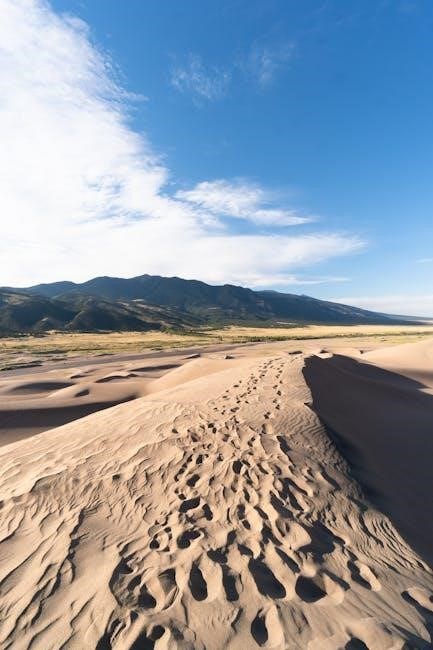
Specialized Adventures
Discover unique experiences like guided backpacking trips and solo travel, offering immersive ways to explore nature, challenge yourself, and create unforgettable memories in stunning landscapes.
9.1. Guided Backpacking Trips
A guided backpacking trip offers a unique way to immerse yourself in nature while gaining valuable skills. Expert guides lead you through scenic trails, ensuring safety and sharing insights about the environment. These trips often include planned itineraries, meals, and gear, making the experience stress-free. They’re perfect for both beginners and seasoned hikers looking to explore new territories without the hassle of planning.
Many guided trips cater to specific interests, such as women-only adventures, fostering camaraderie and empowerment. These organized excursions allow you to focus on the journey, connect with like-minded travelers, and create unforgettable memories in stunning natural settings.
9.2. Solo Travel Experiences
Solo travel in national parks offers a unique opportunity for self-discovery and freedom. Exploring vast landscapes independently allows you to set your own pace and connect deeply with nature. Many parks cater to solo travelers, providing safe and welcoming environments. Guided tours and shared accommodations can help you meet fellow adventurers, while still allowing time for personal reflection. Embrace the empowerment of traveling alone and immerse yourself in the beauty of the wild, creating memories that are truly your own.
Practical Tips for Visitors
Plan ahead, rent a reliable vehicle, and pack essentials. Stay on designated paths, bring binoculars for wildlife spotting, and plan fuel stops in remote areas.
10.1. Self-Drive Safaris and Car Rentals
Self-drive safaris offer unparalleled freedom to explore national parks at your own pace. Renting a reliable 4×4 vehicle is essential for navigating rugged terrain. Always book in advance, especially during peak seasons, and ensure the rental includes insurance. Pack maps, a GPS device, and emergency supplies. Drive cautiously, respect wildlife, and stay on designated paths. Familiarize yourself with local road rules and weather conditions. This adventure allows you to immerse in nature and discover hidden gems without rigid schedules, making it a memorable experience for outdoor enthusiasts.
10.2. Day Visits and Scenic Drives
Day visits and scenic drives offer a perfect way to experience national parks without overnight stays. Plan your route in advance to maximize sightseeing.
Many parks have designated scenic loops, such as the sunset drive with Bushman paintings, ideal for capturing stunning views.
For wildlife enthusiasts, early morning or late afternoon drives often yield the best sightings.
Remember to follow park rules and stay safe on the roads.
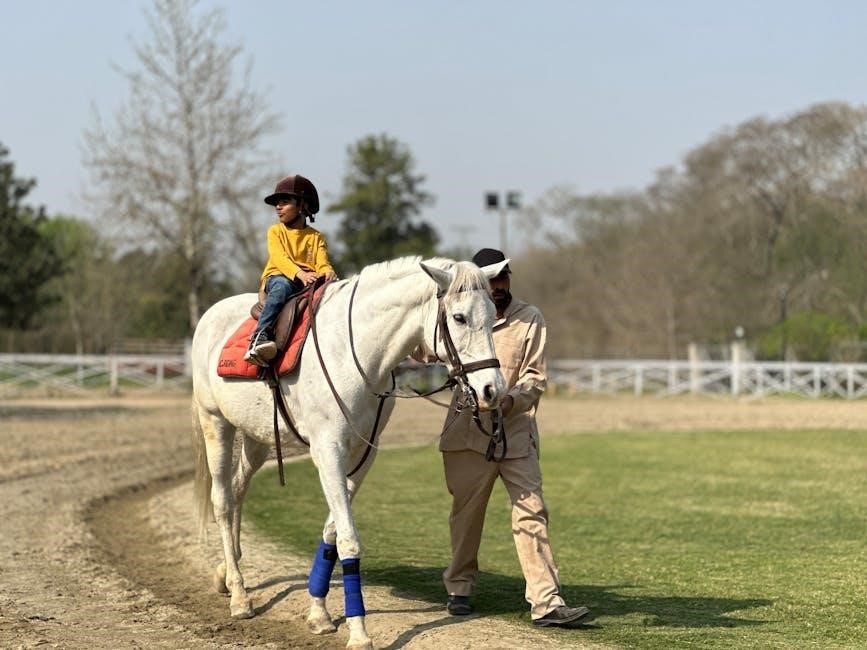
Packing Essentials
Essential items include lightweight gear, reusable water bottles, and eco-friendly products. Pack trail mix with sunflower seeds, flax seeds, and hazelnuts for energy. Don’t forget chia seeds and oats for nutrition.
11.1. Must-Have Items for National Park Adventures
When preparing for your national park adventure, packing the right gear is essential. Start with a sturdy backpack, reusable water bottle, and high-energy snacks. A detailed map, compass, and sunscreen are must-haves for navigation and sun protection. Include a first aid kit, flashlight, and extra clothing for emergencies. Binoculars are perfect for wildlife spotting, while a multitool can handle unexpected tasks. Don’t forget a portable charger for your devices and consider seasonal items like a warm jacket or insect repellent. These essentials will ensure you’re ready for any situation during your trip.
11.2. Food and Nutrition Tips
For a national park adventure, focus on lightweight, nutrient-rich foods. Pack high-energy snacks like sunflower seeds, flax seeds, and hazelnuts for quick bites. Include rolled oats and chia seeds for sustained energy. Hydrate with a reusable water bottle and consider a water purification system. Plan meals with non-perishable items and pre-prepared options. Don’t forget energy bars, nuts, and dried fruits. Store food securely to avoid wildlife attraction. Proper nutrition ensures you stay energized and ready for the next trail or scenic drive, making your adventure memorable and enjoyable.
Your national park adventure awaits! With proper planning, preparation, and respect for nature, you’re ready to create lifelong memories. Happy trails and endless exploration!
12.1. Final Tips for a Memorable Trip
To ensure a memorable national park adventure, stay flexible with your plans, embrace unexpected experiences, and keep a curious mindset. Respect wildlife and nature by following park rules and leaving no trace. Pack essentials like water, snacks, and a map, and stay informed about weather conditions. Capture moments with photos, but take time to disconnect and soak in the beauty. Lastly, reflect on your journey and plan your next adventure—there’s always more to explore!
12.2. Encouragement to Explore More Parks
Exploring national parks is a lifelong journey of discovery and wonder. Each park offers unique landscapes, wildlife, and cultural experiences that inspire personal growth. Whether you’re hiking through breathtaking trails or spotting wildlife on a safari, every adventure fosters a deeper connection with nature. Don’t stop at one park—keep exploring to uncover the diverse beauty of our planet. Challenge yourself to visit new destinations, embrace solitude or share experiences with others, and create memories that last a lifetime. The world’s natural wonders await your curiosity and passion!
